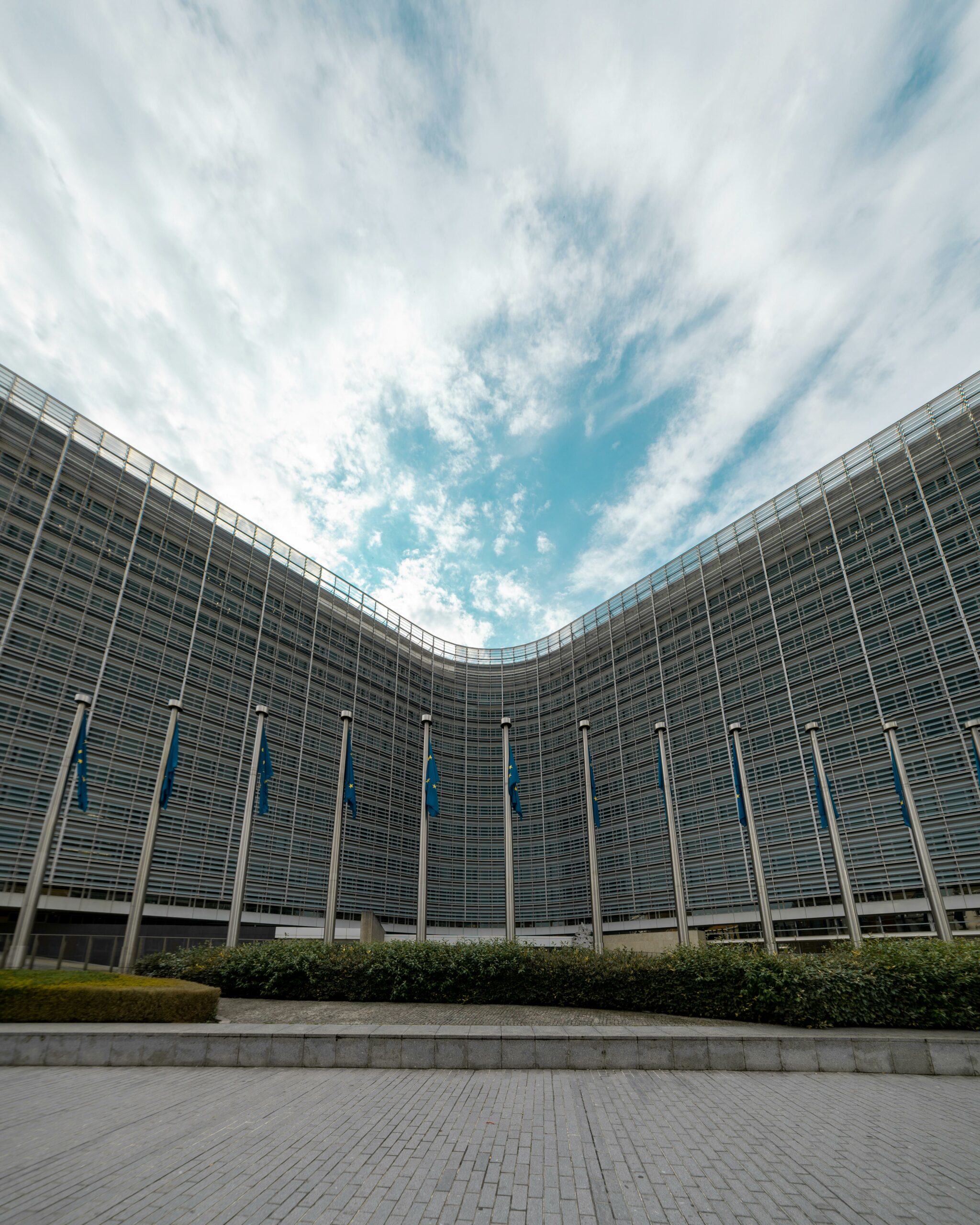Far too many companies rely on express ESG due diligence as a quick check-the-box exercise. Let’s be clear: this exercise is pointless, and does not help a serious investor to carry out a proper examination of the ESG issues in question. Here’s an overview of what’s involved in serious ESG due diligence. This can be done in-house, of course. At Ksapa, we deploy this type of above-threshold due diligence alongside clients wishing to combine solid independent expertise to validate sensitive and strategic transactions. In any case, whether this ESG due diligence is carried out in-house or outsourced, here are a few lessons to help you derive value from it, and document your analysis in the event of subsequent litigation.
What is an ESG Due Diligence?
Environmental, Social, and Governance (ESG) due diligence is the process of assessing a company’s ESG performance and risks before making investment decisions or during mergers and acquisitions. This evaluation aims to identify potential risks and opportunities related to environmental, social, and governance factors that could impact the long-term value and sustainability of an investment. The purpose is to ensure that companies adhere to sustainable practices, mitigate risks, and create long-term value for stakeholders. The key components expected to be included in an ESG Due Diligence include – but are not necessarily limited, to the following:
1. Environmental Factors
- Resource Management: Assessing how efficiently a company uses natural resources like water, energy, and raw materials.
- Pollution and Waste: Evaluating the company’s waste management practices, emissions, and efforts to minimize environmental impact.
- Climate Change: Understanding the company’s impact on climate change, including carbon footprint and measures to reduce greenhouse gas emissions.
2. Social Factors:
- Labor Practices: Examining employee relations, working conditions, health and safety standards, and labor rights.
- Community Impact: Assessing the company’s impact on local communities, including human rights practices and community engagement.
- Product Responsibility: Evaluating the safety, quality, and ethical implications of the company’s products and services.
3. Governance Factors:
- Corporate Governance: Reviewing the company’s governance structure, including board composition, executive compensation, and shareholder rights.
- Business Ethics: Assessing the company’s policies and practices regarding corruption, bribery, and ethical conduct.
- Transparency and Reporting: Evaluating the quality and transparency of the company’s ESG reporting and disclosures.
Why an ESG Due Diligence Deserves Greater Attention than a Tick the Box Exercise?
Let’s put it bluntly. Particularly when it comes to evaluating an asset such as an SME, or even the vast majority of companies with capitalizations of less than 1 billion, for which little documented ESG information is available online, the idea of benchmarking by sector and drawing conclusions from a distance makes no sense, and adds no value. The cost of this exercise is certainly in ticking boxes. However, it carries no serious weight in the reflections of an Investment Committee. Worse still, it can be misleading. Here are just a few of the results to be expected from rigorous ESG due diligence:
- Risk Mitigation: Identifying and mitigating potential risks related to environmental, social, and governance factors can prevent financial losses and legal issues. We have seen business plans rooted in maximizing water consuming industrial processes in increasingly dry areas. ESG due diligence helps to connect the dots between ESG contextual elements and data in a spreadsheet. This can help to confirm veracity of financial information among many other risk mitigation outcomes.
- Value Creation: Companies with strong ESG performance are often more resilient and capable of generating long-term value. Switching to the S dimension of an ESG Due Diligence among other examples, the quality of people management and retention is often correlated to product quality, safety regulations enforcement, customer experience interacting with the company and many other immaterial implications which have a bearing overall on value creation. This is the type of considerations expected to be factored in the valuation of an asset.
- Compliance: Ensuring compliance with increasingly stringent regulatory requirements and investor expectations regarding ESG practices. For example, EU CSRD and many other ESG regulations are tied up with climate’s Paris Agreement trajectories. Whenever assets scrutinized through ESG Due Diligence are way too far from decent climate trajectories, it is increasingly clear that efforts for compliance meaning capacity to fast track decarbonization will be the more costly over time and more imperative at the same time. SMEs tend to look such considerations far from their day to day operating model yet the compliance wall is coming fast. Engagement with asset’s management under ESG due diligence generated on such questions helps to gauge understanding, willingness to make progress and overall transformational capacity.
What Practical Steps to Conduct a Lean Yet Robust ESG Due Diligence?
At Ksapa we operate with our clients applying the following steps.
- Preliminary Assessment: Conduct initial screening to identify major ESG issues and determine the scope of the due diligence.
- Data Collection: Gather detailed information from various sources, including company reports, interviews with management, site visits, and third-party assessments.
- Analysis and Evaluation: Analyze the collected data to identify ESG risks and opportunities. This may involve benchmarking against industry standards and best practices.
- Reporting and Recommendations: Prepare a comprehensive report outlining the findings, including identified risks, potential impacts, and recommendations for mitigating these risks.
- Integration into Decision-Making: Use the findings to inform investment decisions, valuation, and post-investment management strategies.
How to Articulate an Investment Policy With ESG Due Diligence
ESG due diligence must be consistent with the investment policy of the fund or company seeking acquisitions. This is already an important reason why we at Ksapa prefer to work with funds over the long term, rather than on a deal-by-deal basis. ESG is a vast field. Each company and each fund operates with its own specific constraints and principles. Methodological calibration is essential to ensure perfect articulation and coherence between needs and imperatives on the one hand, and ESG data collection on the other. Here are a few best practices to adopt to ensure consistency between the investment policy and the methodological calibration of the ESG due diligence to be carried out, and to validate the suitability of each deal with this policy.
1. Establish Clear ESG Policies and Frameworks
- Develop ESG Guidelines: Create comprehensive ESG policies that outline the firm’s commitment to responsible investing and the specific ESG factors to be considered during due diligence.
- Use Established Frameworks: Utilize established ESG frameworks such as the Principles for Responsible Investment (PRI), the CSRD framework (ESRS standards provide a good set of expectations), TCFD (climate) or TNFD (biodiversity) or many others to guide the due diligence process. Ksapa has a wealth of standards and calibrate based on industries, juridictions and other considerations.
- Define exclusion criteria triggering red flags as early as possible in investment processes. This can save a lot of time and help team and limited resources to focus time on most promising opportunities excluding high risks from the beginning.
2. Integrate ESG Early in the Investment Process
- Initial Screening: Incorporate ESG criteria into the initial screening of potential investments to identify any red flags early. The earlier the better.
- Engagement with Target Companies: Engage with target companies early in the process to understand their ESG practices, policies, and any existing initiatives.
It’s up to the team in charge of the deal to integrate these points into their operating procedures, and thus quickly exclude or carry out initial document gathering, accelerating ESG due diligence on more strategic aspects.
3. Prioritize Standardized ESG Risks, Opportunities and Data Collection According to the Nature of a Thematic Fund or Asset Segments
Before embarking on ESG due diligence, it is also important to clarify the type of ESG issues and data that should be explored as far as possible across all the assets under management and deals considered for inclusion.
- Materiality assessment: By asset segment or for a thematic fund, for example, carry out a materiality assessment to identify the ESG issues most relevant to the industry in question. Focus on the factors likely to have the greatest impact on the investment. Ksapa uses a variety of sources to calibrate and prioritize these material issues quickly, starting from a benchmarked base but not precluding the addition of more specific, deal-specific considerations.
- ESG data collection: Funds wishing to qualify under article 8 / 9 of the SFDR must manage assets with ESG indicators that are as wide-ranging as possible, but as simple to collect as possible. It is useful, but not essential, to clarify the type of default ESG data that should ideally be collected through post-deal assets under management. Clarifying this before starting ESG due diligence is useful in order to benefit from these exercises in identifying and verifying the quality of data that can be collected from the target assets under consideration.
4. Incorporate ESG Findings into Investment Decisions
Experience shows that investment committees and other decision-making bodies generally have little expertise in ESG issues. We therefore need to rationalize, make objective and translate ESG data in such a way as to guarantee its appropriation and reduce information asymmetry between decision-makers.
- Investment Committee Review: Present ESG findings to the investment committee as part of the overall investment decision-making process. Ensure that ESG risks and opportunities are considered alongside financial analysis.
- Valuation Adjustments: Adjust valuation models to reflect identified ESG risks and opportunities. This could involve discounting cash flows for potential ESG liabilities or recognizing value creation opportunities from strong ESG practices.
5. Develop an ESG Action Plan Once Investment is Confirmed
- Envision post-Investment Strategy: Develop a detailed ESG action plan for the post-investment phase. This should include specific initiatives to address identified ESG risks and capitalize on opportunities, or encourage asset to qualify for specific standards or certifications. Ksapa for instance is using a database of 330+ standards which can help to identify specific requirements in support of mitigating targeted ESG risks.
- Monitoring and Reporting: Establish ongoing monitoring and reporting mechanisms to track ESG performance throughout the investment period. Regularly update the ESG action plan based on performance and evolving best practices.
- Training and Capacity Building: Provide training and resources to portfolio companies to help them improve their ESG practices.
- Collaborative Approach: Work collaboratively with portfolio companies to implement ESG improvements, setting realistic targets and timelines.
- Internal and External Reporting: Maintain transparency by regularly reporting ESG performance to internal stakeholders and external investors. This can help build trust and demonstrate commitment to responsible investing.
- Stakeholder Communication: Communicate ESG initiatives and progress to broader stakeholders, highlighting successes and addressing challenges openly.
6. Continuous Improvement and Adaptation
- Regular Review: Continuously review and update ESG due diligence practices to incorporate new insights, regulations, and best practices.
- Feedback Loops: Establish feedback mechanisms to learn from each investment and improve the due diligence process for future transactions.
By following these good practices, firms can effectively integrate ESG considerations into their investment processes, thereby mitigating risks, enhancing value, and contributing to sustainable development.
How to Manage Tradeoffs “to go or not to go” in Investment Factoring ESG Due Diligence conclusions?
Managing the trade-offs in investment decisions based on ESG due diligence findings involves balancing potential financial returns with identified ESG risks and opportunities. There are many factors to consider, and the trade-offs are often not straightforward. Here are some strategies for managing these situations effectively:
1. Risk-Reward Analysis
- Quantify ESG Risks and Opportunities: Assign monetary values to ESG risks and opportunities wherever possible. This can help in comparing them directly against expected financial returns.
- Scenario Analysis: Conduct scenario analyses to understand the potential impact of ESG factors under different conditions. This helps in assessing the robustness of the investment under various ESG-related events.
2. Materiality Assessment
- Prioritize Material ESG Issues: Focus on the ESG issues that are most material to the specific investment. Materiality varies by industry and company, so identify the factors that are most likely to impact financial performance.
- Stakeholder Engagement: Engage with stakeholders to understand which ESG issues are most important to them. This can provide insights into potential reputational risks and opportunities
3. Integration into Valuation Models
- Adjust Valuations: Incorporate ESG factors into valuation models. This could involve adjusting discount rates to account for ESG risks or recognizing potential cost savings and revenue opportunities from strong ESG performance.
- Sensitivity Analysis: Perform sensitivity analyses to see how changes in ESG performance impact the overall valuation. This helps in understanding the potential range of outcomes.
4. Develop Mitigation Strategies
- Mitigation Plans: Develop and assess plans for mitigating identified ESG risks. This could involve investing in new technologies, improving governance structures, or enhancing social initiatives.
- Engagement and Improvement: Engage with the target company to implement ESG improvements post-investment. This can enhance long-term value and reduce initial ESG concerns.
5. Use of ESG Metrics and Benchmarks
- Benchmarking: Compare the target company’s ESG performance against industry benchmarks and peers. This helps in understanding relative performance and identifying areas for improvement.
- ESG Metrics: Use standardized ESG metrics and frameworks to evaluate and compare investments. This ensures consistency and comprehensiveness in the assessment process.
6. Balancing Short-term vs. Long-term Goals
- Long-term Perspective: Emphasize long-term value creation over short-term gains. ESG investments often yield benefits over a longer horizon, so align the investment strategy with long-term goals.
- Interim Targets: Set interim ESG targets and milestones to track progress and make necessary adjustments over time.
7. Diversification
- Portfolio Diversification: Diversify the investment portfolio to balance ESG risks across different sectors and geographies. This reduces the impact of any single ESG-related issue on the overall portfolio.
- Thematic Investments: Consider thematic investments that focus on specific ESG themes, such as renewable energy or social impact, to align with broader ESG goals.
8. Decision-Making Frameworks
- ESG Committees: Establish ESG committees or integrate ESG specialists into investment committees to ensure that ESG considerations are adequately factored into decision-making.
- Structured Decision Frameworks: Use structured decision frameworks that systematically evaluate both financial and ESG factors, ensuring a balanced approach.
Conclusions
By working on these different activities, companies wishing to make acquisitions or build up asset portfolios have the means to structure a simple and useful ESG approach. ESG due diligence is then articulated to gather strategic and operational information to support decision-making. Ksapa works on all these aspects, worldwide, and can assist you in these reflections. Get in touch with us!
Author of several books and resources on business, sustainability and responsibility. Working with top decision makers pursuing transformational changes for their organizations, leaders and industries. Working with executives improving resilience and competitiveness of their company and products given their climate and human right business agendas. Connect with Farid Baddache on Twitter at @Fbaddache.






